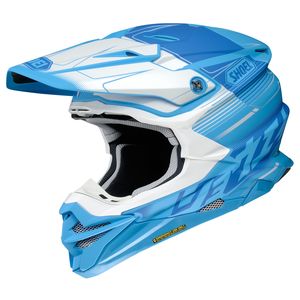To the untrained eye, it seems too simple to be interesting: Turn left, and turn left again. Then keep turning left through the same, two, 180-degree corners until you see a checkered flag.
As a young enthusiast, I might have dismissed flat track as the mind-numbing NASCAR of motorcycle racing, had it not been for “On Any Sunday,” a movie which romanticized American flat-track racing and its heroes clear to the top of my mind’s Mount Olympus. The speed, the style, the brakeless front wheel — it’s as timeless as it is awe-inspiring. And with the international racing success of legends like Kenny Roberts and Wayne Rainey, who famously trained with small bikes on dirt tracks, learning to become a better motorcycle pilot by riding flat track has become the standard tool for track-day wannabes and champions alike.
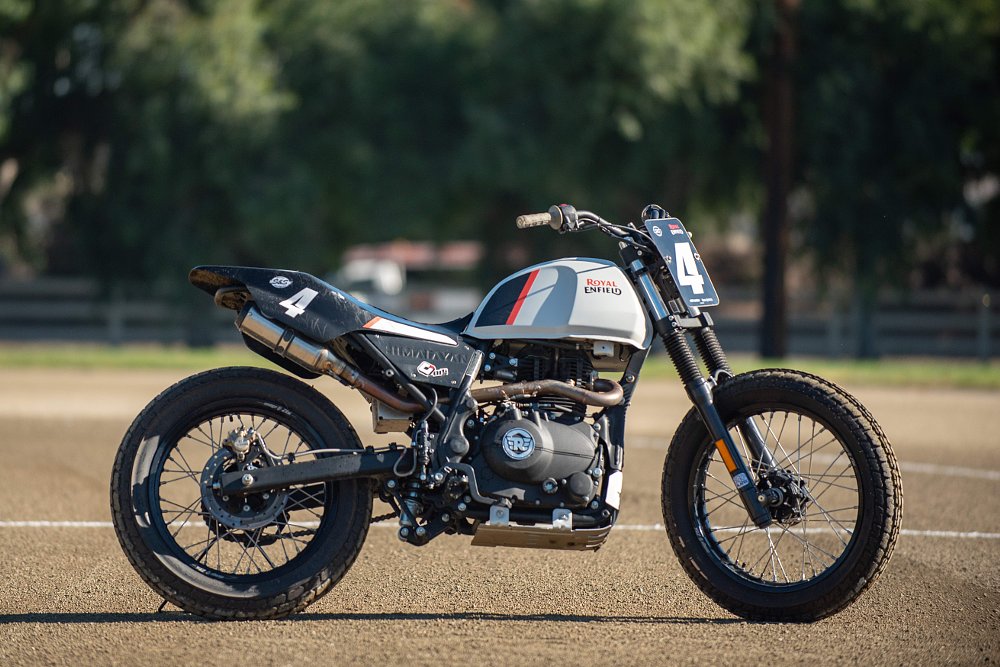
Most flat-track schools that have cropped up in recent memory use a similar recipe of providing small dirt bikes (100 to 150 cc) shod with quasi-dirt tires, a track with a loose surface, and a current or former racer as the marquee instructor. Some travel, like Danny Walker’s American Supercamp, while others host riders at some version of mini-moto paradise, a la Colin Edwards’ Texas Tornado Boot Camp or Rich Oliver’s Mystery School. Royal Enfield has partnered with pro racer Johnny Lewis and his Moto Anatomy program to create the Slide School, in a familiar mold. The one major difference is the Slide School uses customized versions of the 411 cc Royal Enfield Himalayan, a machine that weighs 430 pounds in showroom trim. In other words a full-size motorcycle, not a minibike.
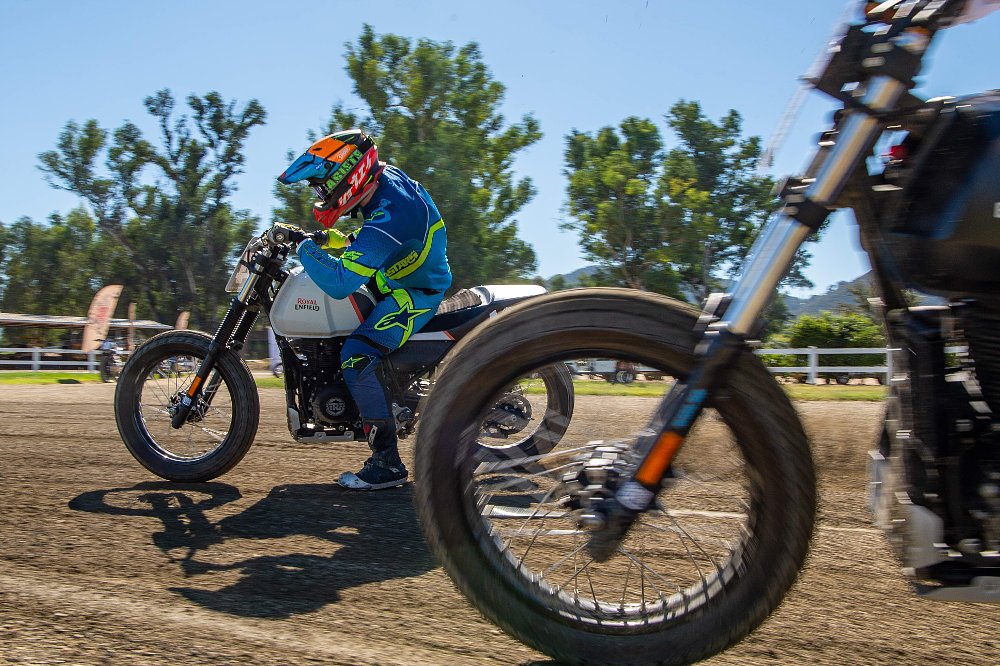
The structure of the school is casual. After pleasantries with staff and saying hello to your classmates, you can expect a briefing on the track, riding etiquette, and a once-over on the bikes before diving into basic riding instruction. I say basic not because it’s easy, but because even to a new rider the goals in the early sessions might seem fairly simple — use the gas to go faster, the rear brake to slow down, and boom there’s a lap. This is what every flat track school I’ve ever attended boils down to, and even if it sounds simple I can promise you it’s not.
What you’ll learn turning left
There’s a lot of nuance to getting around a racetrack quickly, no matter the type of racing, which is why even the pros are always trying to do it a little better and always making mistakes. A big piece of riding flat track is body position, and arranging yourself in the saddle appropriately can be tricky, especially depending on your riding background. A roadracer by nature, it was hard for me to learn to push the bike down and away from my body in a turn, and that’s just the beginning. Push on the outside footpeg with my right foot. Rotate my hips to point through the turn. Set my left leg to drag gently on the ground, but keep my knee away from the left side of the handlebar and not too far forward. And so it goes. Trying to get one clean lap with good positioning for my lower body alone would have kept me there all day, much less my arms, head, or moving my weight around.
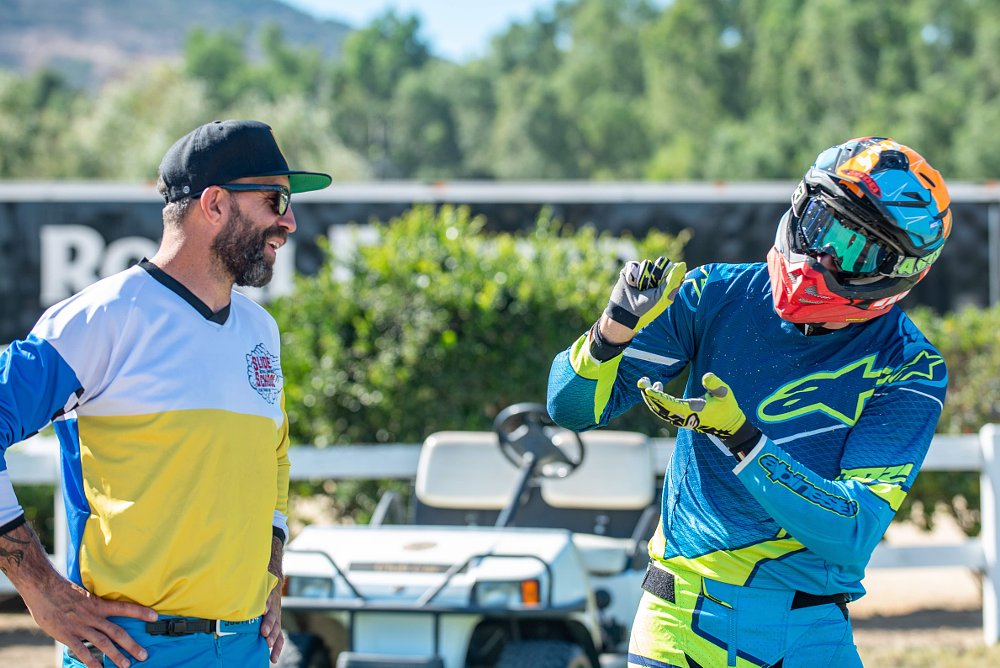
Breaking down a single lap into myriad tiny tasks is where the beauty of the training shows itself. A lap only takes about 15 seconds, so in one session I could focus on only where my eyes were looking for a half-dozen laps, then take a quick pause and work on where my elbows are positioned for another 10 laps, and so on. Repetition trains the brain, and the more muscle memory a rider can create for the foundational elements of going through a turn the more cognitive capacity can be used to focus on things that vary each lap. Practice rarely makes perfect, but it’s the only place to start.
The singular focus of the activity is terrific, too. Getting lost in the technique, the surface, and the motions allows for settling into a mindset that we motorcyclists usually can’t afford to access when riding in public. Charging toward a corner with only one, tiny facet of control in mind is freeing but it requires knowing the turn and trusting the surroundings enough to push every other concern out of mind. For me it’s downright meditative, a delicious escape from the things that usually worry me by stepping onto the tightrope of controlling traction on a motorcycle.
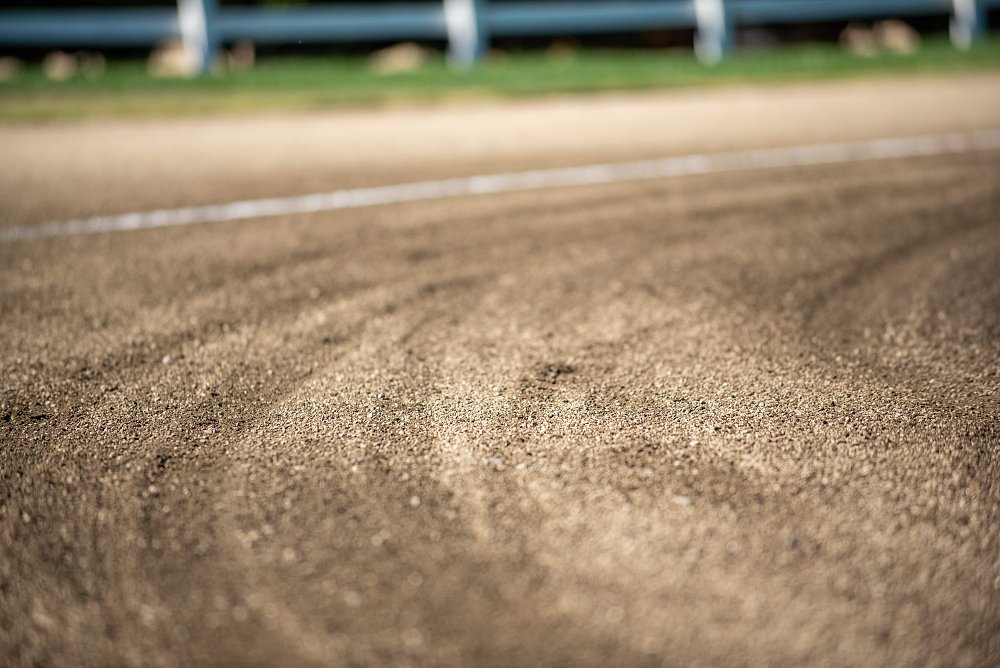
So, you’ll learn how your body should fit and feel on the bike, not to mention spin so many laps you’ll either get dizzy or center your qi, and if you’re up for it you will actually slide. That’s the name of the school, after all. “Losing control” of a motorcycle seems like it has an easy definition to each of us, but it’s a subjective thing. One rider’s crash is another rider’s pleasure, you might say, and that means each person has to work up to going fast enough that the bike slides into and around the corners. What’s important to remember is that no matter how sideways you get, there is plenty to learn from going through a turn faster than you feel comfortable.
High-performance riding on a closed course, even if it’s slow, offers you a chance to experience the discomfort of almost crashing with minimal consequences, and in my opinion the value of that cannot be overstated. The only way our bodies truly know how much and what kind of effort to use when we do anything at all — push a piece of wood through a table saw or catch a football or any other dextrous task — is that we’ve done it before. And arguably the only way we as motorcyclists can know how a bike straightens out after being sideways or the front wheel regains traction is to have tried it. Those with the most experience using a table saw or catching footballs are often best at it, and the same goes for controlling a motorcycle. It’s also really, really fun.
Himalayans on the loose
Royal Enfield using the full-size Himalayan for its Slide School is a risky move in some respects. A lot of what often makes schools and training programs like these attractive is that when you do lose control of the bike and get in over your head, at least the bike is small and unintimidating. Even the Himalayan I rode in this school, stripped down and track-prepped by S&S, weighs around 360 pounds. It’s a tidy package unless you compare it to a Yamaha TT-R125, in which case it’s a behemoth. There’s an upside, though. The fact that it does feel like a full-size bike means there’s a chance that the lessons learned in that saddle are more relevant for someone who rides on the road.
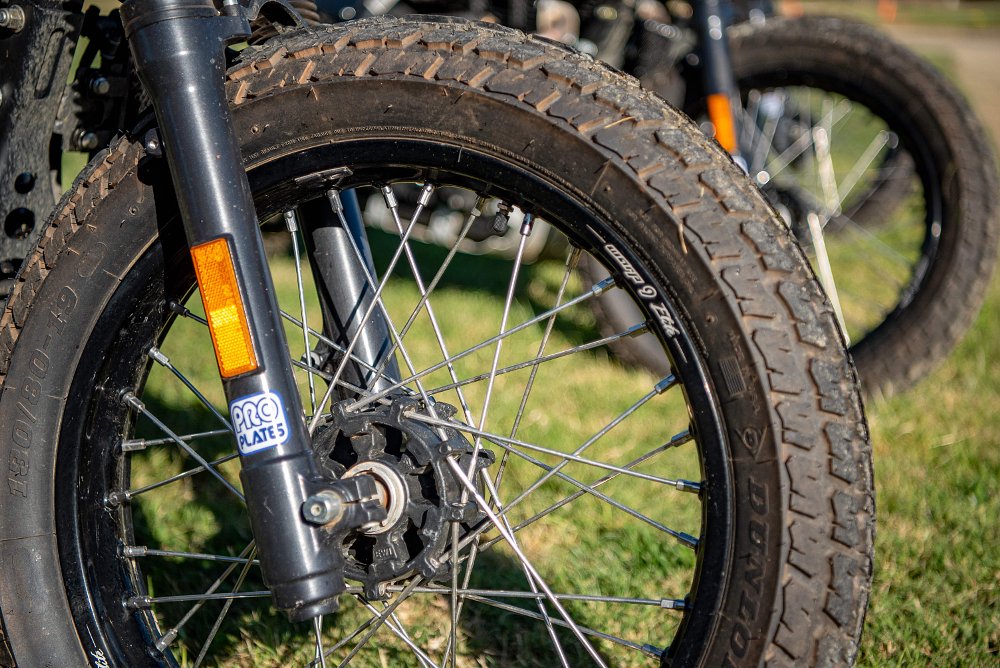
Enfield no doubt chose the Himalayan because it's the smallest and most modern bike in its North American lineup. The essential modifications involve removing a significant percentage of the parts, including all of the lights and instruments, the front brake, and just about everything hanging off or sitting on the rear subframe. A high-mount exhaust replaces the stock one, a flat-track-style carbon-fiber seat unit matches the flat handlebar, and 19-inch flat-track rims and rubber meet the dirt. It’s a handsome package. The 411 cc air-cooled engine works pretty well on flat-track duty, too, though the mild state of tune and low rev limit was a little hard to get used to during my half day at Blackmore Ranch in Southern California. Johnny Lewis told me and the other students not to bother with second gear. “Just let it hit the limiter,” he said. Once up to speed that meant holding the bike on the rev limiter for half of each straightaway, which just never feels right to me and probably exposed a slight limitation in the Himalayan’s track prowess.
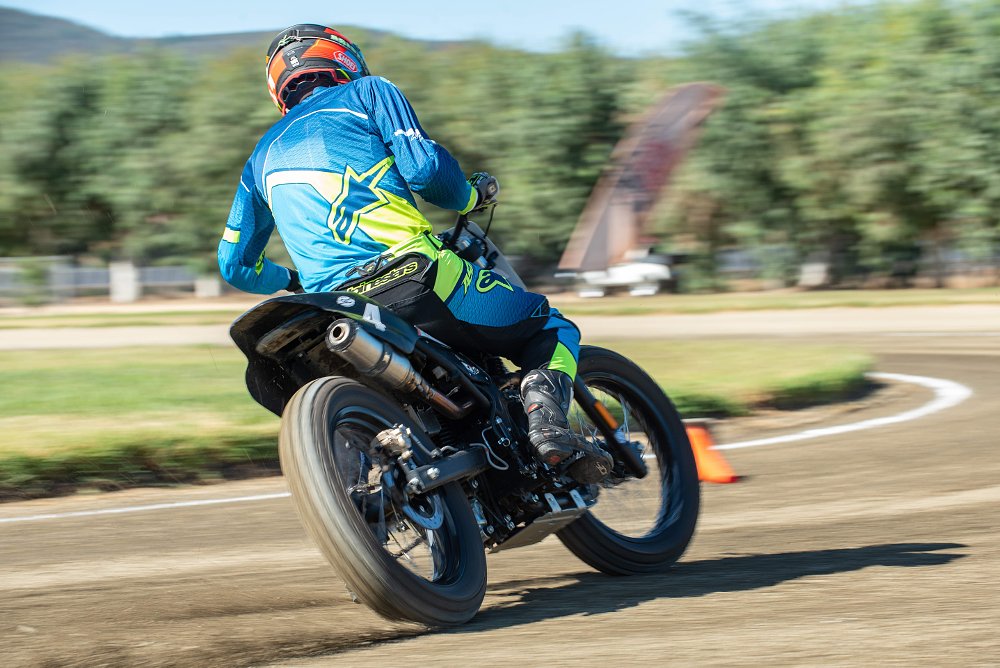
All things considered, the bike proved just as willing to be slung around a slippery flat track as it did to haul me and my camping stuff over a mountain pass last year. And the Slide School proved to be another fun way to dip your toe in the dirt-track pool without pretending you’re going pro — a half-day commitment, for $250, with provided bikes and a knowledgeable team.
I just need to offer one last word of warning, which is that if you try it there’s a chance you’ll be hooked. It’s more interesting, and fun, than it looks.

 Membership
Membership












